Winter Vacation 2003-2004
I always have several weeks off at the end of the year, as my division of Honeywell gives a paid vacation between Christmas and New Years. (This is an aerospace industry tradition, I believe.) This gives me some time to return to the land of my fathers, my birthplace, my motherland: Granger, Indiana. The sights are familiar, and the warmth of my family more than makes up for the coldness of the weather.
We had several celebrations over the course of the stay, so I had the chance to see many of my extended family. My dad's siblings and their families joined us for Christmas Eve dinner, we went to my grandfather's house for Christmas day, and we hosted three other parties (a reunion with my mom's cousins and families, New Year's Eve, and my dad's birthday). This, as well as the holiday preparations (including gift buying and other preparations), kept everyone busy. The time went by too fast, but these pictures document its passing.
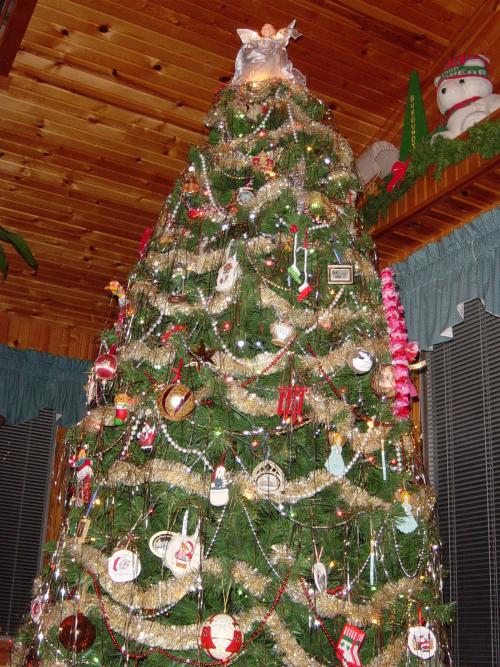 | Our Christmas tree, in the Great Room. This room was added to the house in 1992, and has lots of space. My parents always put a lot of effort into decorating the room for the holidays. A friend described the room as "a winter wonderland". |
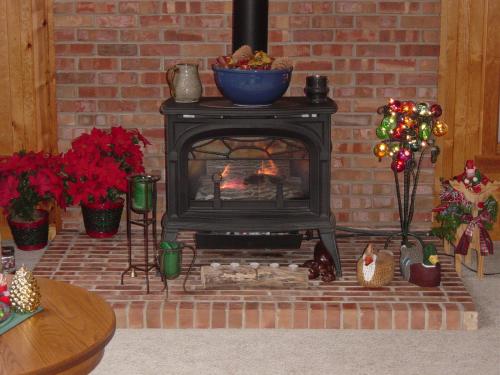 | The Great Room is warmed by a gas stove. |
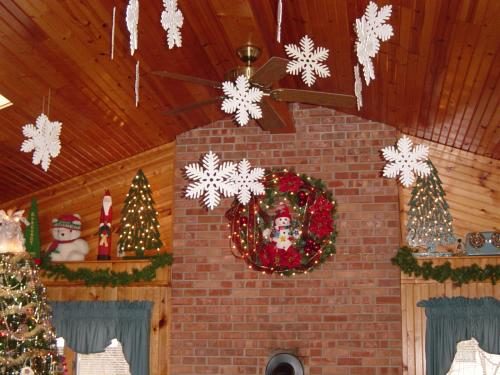 | My grandfather created a number of snowflakes out of wood, and my parents hung them from the high ceiling of the Great Room. |
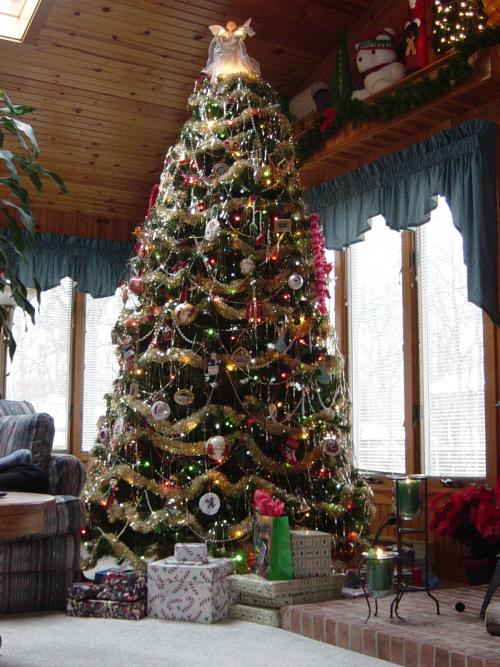 | Another view of the tree, with some Christmas Eve presents beneath it. |
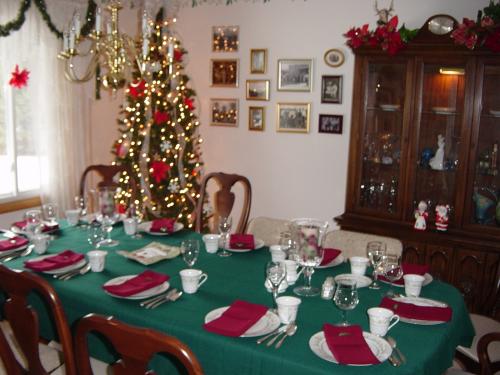 | My mom put together an excellent dinner on Christmas Eve, for the Borlik family. After my parents added on the Great Room, they converted the former Living Room of the house into a dining room. |
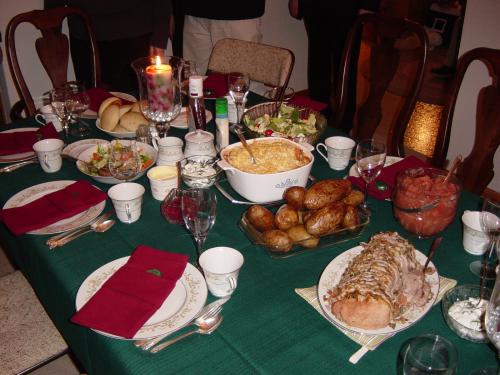 | Food. |
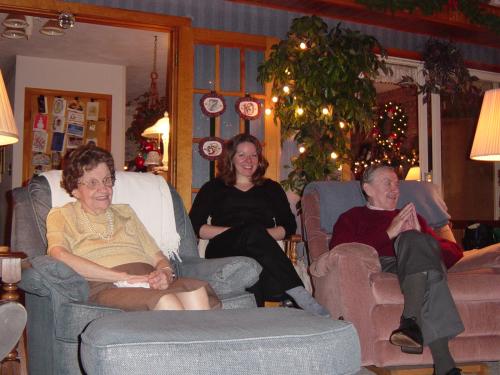 | My (paternal) grandmother's sister Frances, my sister Emily, and my (maternal) grandfather John. After dinner, we adjourned to open gifts. |
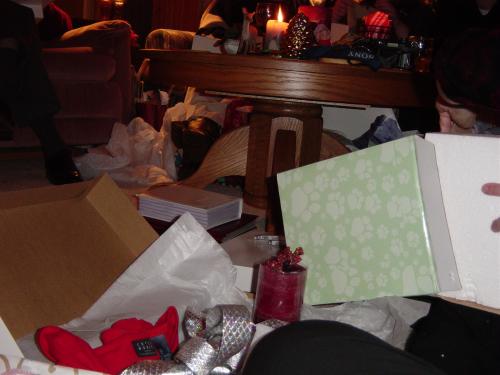 | The floor was filled with the detritus of gift wrappings. Our annual exchange was successful. |
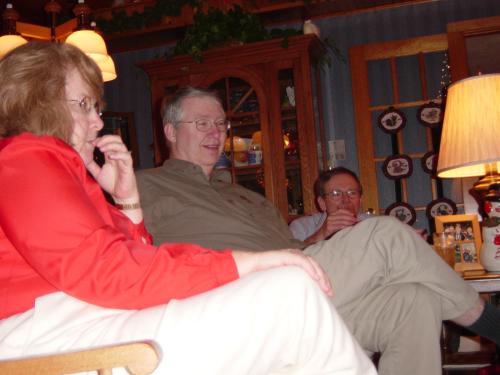 | My Aunt Davina, Uncle Bill, and my dad (left to right). |
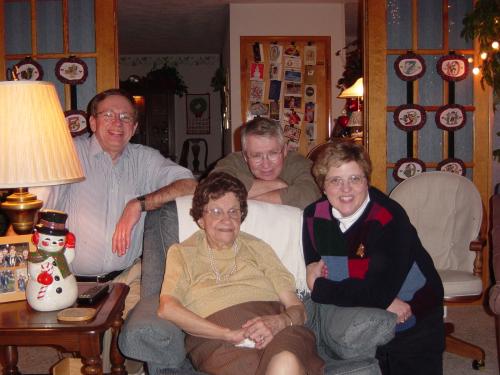 | Children of Elizabeth (my grandmother), and her sister Frances. My dad, uncle Bill, and aunt Kate. |
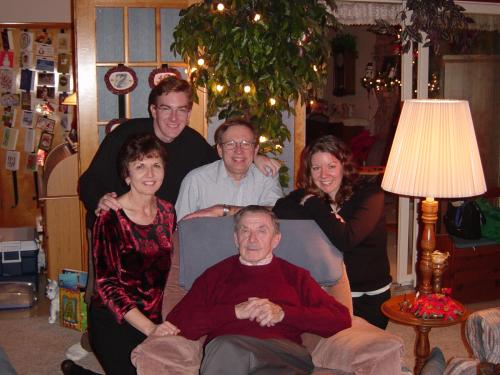 | My immediate family. My mom, me, my dad, grandpa, and sister. |
 | My dad. |
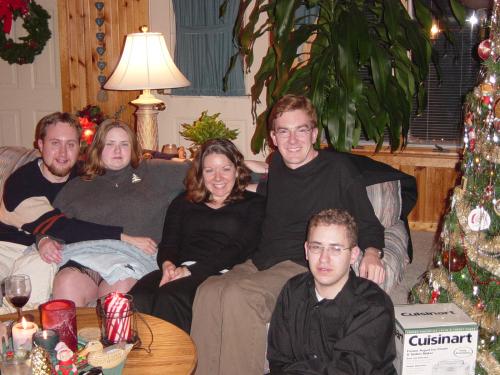 | My first cousins. Mark Sniadecki, Laura, Emily, me, Mike. |
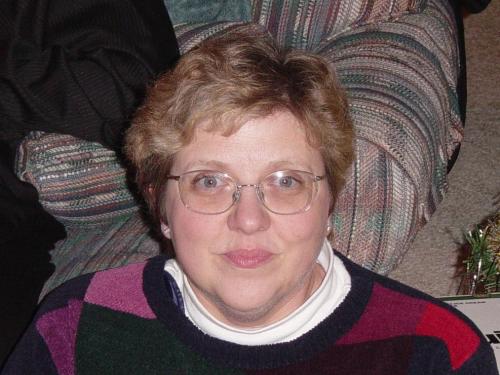 | Aunt Kate!! |
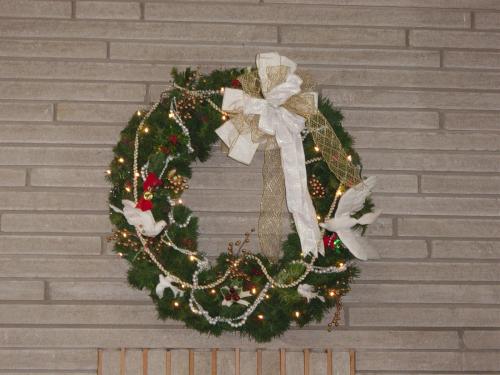 | On Christmas day, after opening some presents with my parents and sister, we went to my grandfather's house. This is the wreath over his fireplace. |
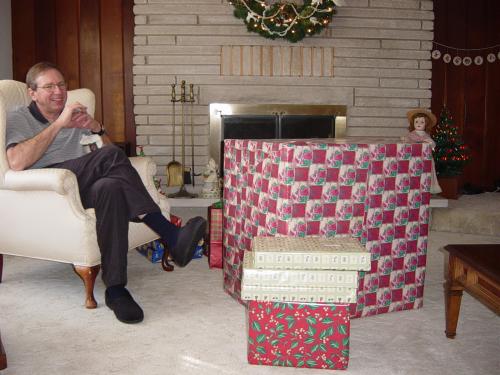 | We had another gift exchange at my grandfather's. My sister and I got my grandpa a new television (in the big box). |
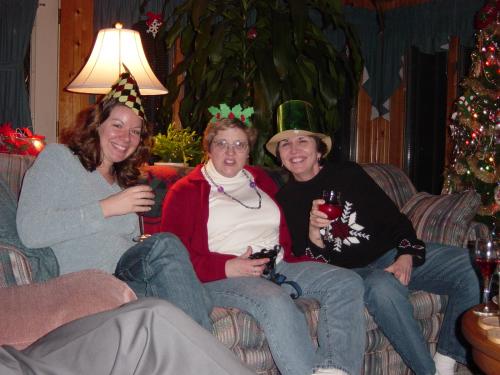 | We stayed in on New Year's Eve. My mom has funny hats that are probably collectors' items from some past party. |
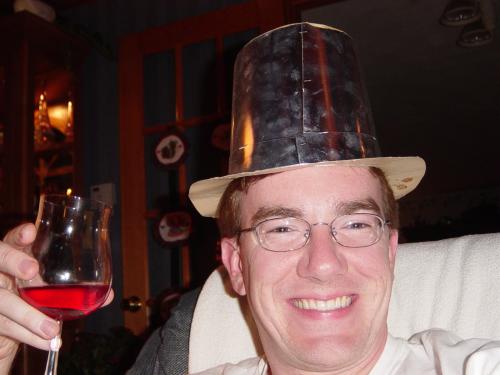 | Let me wish you a happy new year. |
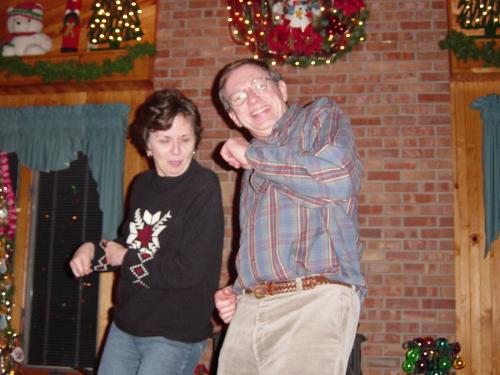 | My mom and dad dance a jig to celebrate the coming of 2004. |
 | There was one final party on my trip: My dad celebrated his birthday on January 6. |